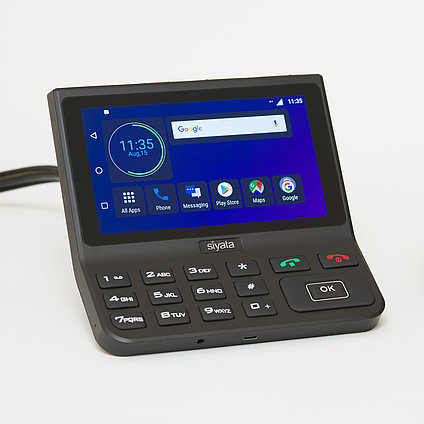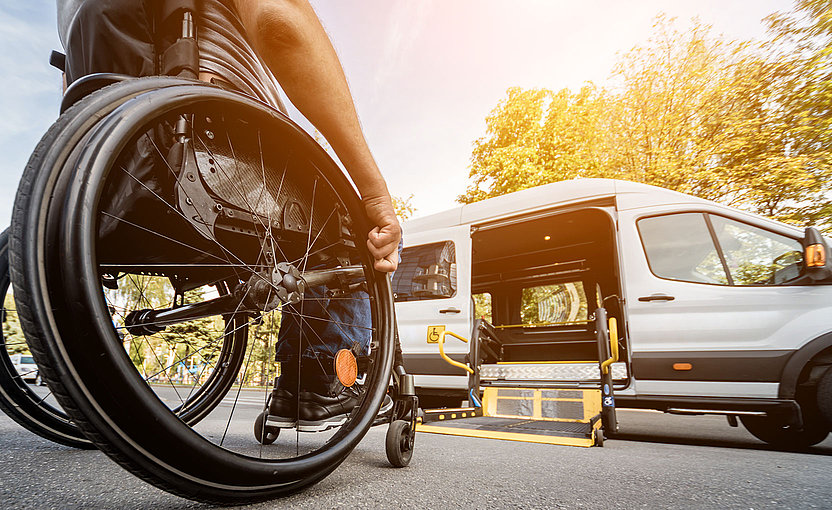
To ensure the drivers pick up the right passengers at the right place and time, the company has a team of dispatchers in their office, and they use technology to communicate with their driver and schedule the trips. Historically, the company used a two-way radio in each vehicle for voice communications, and they used a tablet with a SIM card operating on a cellular network. The tablet was mounted in the vehicles to send a data message to the drivers about who, where, and when they needed to pick up their next passengers.
As a non-profit organization in 2018, the company found these two solutions to be expensive since they were paying a monthly service fee for both the two-way radio, and for the tablet. They also found that there were some places in and around Hamilton where either the two-way radios or the tablets would struggle to be able to connect to the network. Lastly, they found the process of managing the tablets to be cumbersome. Each day, the driver would arrive at the the company office and sign out a tablet for that day. They would carry the tablet to the vehicle and insert it into its mounting holder. If the driver who used this tablet on the previous day had properly charged its battery, then the driver would begin their day by receiving a message on the tablet about their first passenger pick-up. At the end of the driver’s day, the reverse process would occur. The driver removed the tablet, carried it into the office, signed it back in, and connected it to a charger. Sometimes this process didn’t go as planned as tablets would occasionally be dropped and they would break, or they had charging issues, or they would go missing.

The company began searching for another solution. Their wireless carrier partner recommended to consider the new Siyata Mobile UV350 In-Vehicle device since this single device could perform the functions of both the two-way radio, and the tablet at a more affordable monthly service fee. The Siyata Mobile UV350 has an external antenna which means that it could receive cellular signal in weaker cellular areas. And because the device is permanently installed in a vehicle, it would mean that drivers for the company would no longer need to fuss with their tablets.

The company agreed to trial the Siyata Mobile UV350 device. The specialized team met with the company and arranged to have a professional installer install some devices into the company vehicles. The team also installed wired palm mics which their drivers were accustomed to use with their two-way radios, and following the company´s request, they downloaded two key apps onto the devices. First, they downloaded an app for Push-to-Talk which works on the cellular network (Push-to-Talk over Cellular). This app would allow the company dispatchers and supervisors to speak with one or all of their drivers at once with a simple press of a button, and the drivers could respond to these conversations using their wired palm mic, just as they did with their two-way radio. Secondly, they downloaded a scheduling application. This was the very same scheduling app that the company had used on their tablets to send details to the drivers about their next passenger pick-up.
More about the Siyata Mobile UV350
The company tested the Siyata Mobile UV350 device for about one month to ensure the solution would meet their needs. After the month of testing, the company was convinced. Not only was the audio in the device loud and clear for the Push-to-Talk calls, but also the cellular reception throughout their service area was strong, and the dispatch app showed all the key passenger pick-up information clearly to the driver on the Siyata Mobile UV350. The wireless carrier partner provided a competitive quote to the company for both the devices and for the monthly service fee, so the company agreed to fully deploy the Siyata Mobile UV350 in its fleet of vehicles.
During the actual installation period, The team was on-site demonstrating the correct installation process to the company maintenance staff who had similar experience installing their older two-way radios in the past. The company maintenance staff quickly learned the installation process for the new devices, and within a few weeks all fleet vehicles were equipped with a device with a Wired Palm Mic, and they had their two key applications, Push-to-Talk over Cellular and the Scheduling app, downloaded and configured.

